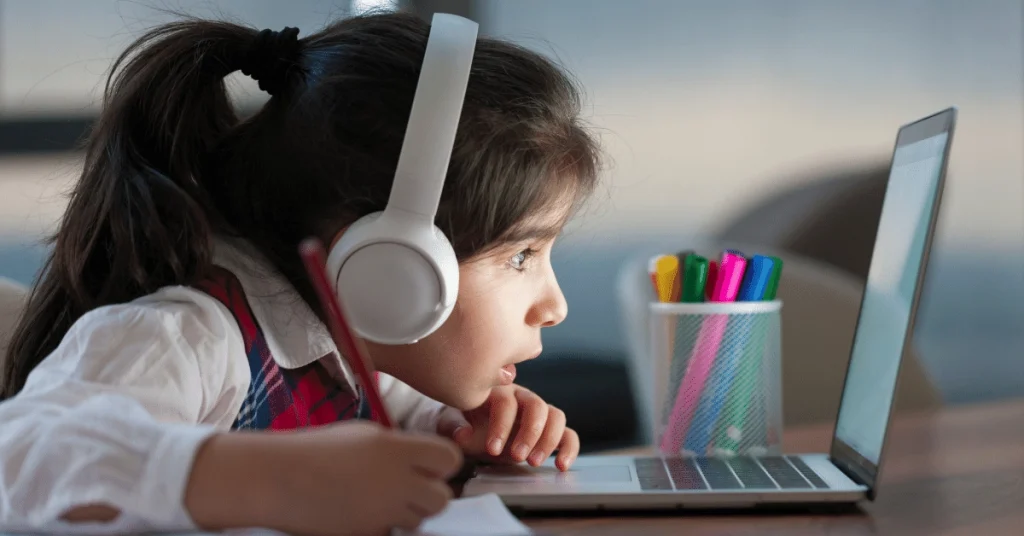In the second article of the series, we will present the two main methods of distance learning and the: Synchronous and Asynchronous Learning process.
The asynchronous learning process
Students may or may not be familiar with the teaching tools and platforms selected by the institution. Let’s say for argument’s sake that students have no prior experience on how to operate platforms/tools for synchronous or asynchronous learning. The way to deal with this situation would naturally be to educate them.
To get started, their teachers would need to organize online seminars or webinars for introducing these tools to students. Phase one of student training would include essential training in the use of the online platform’s tools for synchronous learning so that in phase 2, students can be instructed in the use of the asynchronous learning platforms as well.
In the beginning of the distance learning experience, it is very important to establish the ground rules for both synchronous and asynchronous communication between Teacher – Student and Students – Students (by using the selected synchronous communication platform).

Establishing an “Educational Contract” among all participants is very important and this should be a result of a collective agreement (possible in an online forum of asynchronous communication). This “Educational Contract” would be later included in the terms and conditions of communication for the use of asynchronous learning methods.
Many educational institutions (K12 Schools, Language Learning Centers, Prep Schools, etc.) have already adopted asynchronous learning platforms to support their regular teaching process in the physical classroom. The use of asynchronous platforms in conjunction with conventional teaching is a concept known as blended learning.
This fact means that all the participating parties (administration, supervisors, educators, teachers), have already adopted the required knowledge and experience for the proper use of the individual tools that are contained in each of the platforms. All engaged parties know the structure of the platforms, the specific communication and assignment tools involved, their roles and limitations as well as everything included in the support of teaching and learning in a physical teaching environment.
Therefore, what must be done now considering the new state of emergency, is that the levels of communication and cooperation need to be re-evaluated to fit into the “educational contract” established between teachers and their students. Subjects that require the use of the educational platforms every day may now need to be accessed just a few times per week. The frequency will be determined as the virtual class goes on (similarly to the physical teaching process).
Hands-on advice for the implementation of asynchronous learning
With the assumption that students are experienced in the use of the platforms for synchronous learning (as described previously), what must happen (after the revision of the usage conditions due to the emergency) is the update of the platform with new educational material. The update of the educational platforms with new educational material must be useful for self-teaching and distance learning.
Educational material that will help the students engage in activities by themselves with the use of spreadsheets. These spreadsheets should be created carefully with the inclusion of proper instructions, easy-to-understand explanations and appropriate descriptions for use of additional learning sources (websites, software, articles, book chapters etc.) These activities should be integrated carefully, in a supportive and descriptive way, both on a scientific and a technical level.
For example, when an experiment simulation is included in the educational material, that is intended for students to “conduct” a virtual experiment or for students to carefully view a video of a physical phenomenon or of a historic battle, there must be an explanation included regarding the proper use.
New educational material, such as the spreadsheets we talked about earlier must contain an explanation for students as well as useful tips and instructions. For example, the red molecules are not really red but they have been color-coded in order to be distinguishable from the rest of the molecules (which we have for example been given the blue color) or in the case of a video containing a historic battle, it can state that the video has been created by a country with a bias towards this specific battle due to the battle’s outcome.
In addition, you must take into consideration that for running scientific experiment simulations or viewing videos you may require additional tools (add-ons). In that case, you will also need to include clear instructions in written form or in the form of a video tutorial.
Teaching support will gradually help students to pay more attention to the educational material they are viewing (In a simulation or video) and with the proper instruction, this may result in students resolving any technical problems (e.g αdd-on Installation) they may encounter on their own. By empowering students this way, students may finally have the time and focus on what really matters ‘learning’, and at the same time developing more technical knowledge.
The aforementioned information may be more easily communicated in the environment of a physical classroom, but because of the absence of physical contact in distance learning, the availability of all-round support for students becomes a crucial part of the teaching process. In a gradual and safe way, through learning activities, students should be introduced to ways for developing meta-learning abilities (self-learning, self-regulation). The ability for students to evaluate their own performance is very important for their personal and academic development.
The use of these digital tools in the physical classroom would be hard to apply, except if the class was equipped with computer equipment or even better classrooms with a 1-1 ecosystem (each student would have aν iPad, tablet, or another mobile device).
The synchronous learning process
In all forms of teaching, the method or model used to engage students plays a pivotal role in the success of the educational process. In the case of physical teaching, the usual method used by teachers in class is simple present, discuss and question the subject matter and use presentation material or examples for support. Students on their part, follow the presentation, ask questions, perform experiments and in cooperation with their classmates and teacher they answer problems, find solutions, solve problems and, in the end, evaluate all activities.
This teaching model is useful and effective. Its use must be followed in modern online teaching for practical and emotional/psychological reasons. Students have learned through the years to operate in a specific way in class and this is what they do effectively, so retaining the same method for teaching in a virtual classroom is very practical. Retaining the teaching method online is important in an emotional/psychological sense, for students not to be scared with all the changes this crisis has brought to their lives.
At the same time, it is a unique opportunity to take advantage of all the capabilities offered by the adoption of innovative online teaching methods that can be used during online teaching sessions and at the same time use tools specially developed to maximize the benefits of the digital environment. These online teaching methods include the Flipped Classroom, PBL – Project Based Learning, teamwork/cooperation through e.g Jigsaws, Playful Learning, Game Βased Learning, Context Βased Learning, and many more.
These teaching methods (there are a lot more methods out there) in combination with the previously mentioned digital educational tools can cultivate the critical reasoning skills of students as well as help them with problem-solving and communication/collaboration skills. The most important take-away from these teaching methods is the fact that they increase student engagement with the educational process and material. At the same time, you can say that these methods also create an environment that cultivates academic innovation and encourages student’s creativity. This all results in the enhancement of students’ meta-learning abilities.
Wrap-up
With the educational material educators’ have created (or edited) and then uploaded to the educational platform, the synchronous learning process can safely begin. This must take place in harmony with the “Educational Contract”. It is essential for educators to have in mind the inherent difficulties and challenges they will face due to the unique conditions of communicating exclusively from afar.
In this way, with these learning “elements” (class, communication and material that has been uploaded asynchronously) the gaps can be covered and augmented with the use of smart tools and innovative teaching methods. Thus, the educational crisis can be turned into an educational opportunity.
In the third and final article of this series, we will share a series of practical suggestions and tips to help educators in their struggle to implement distance teaching tools in this new reality brought on by the COVID-19 pandemic. A special emphasis is given to the difficulties created by the lack of physical proximity of students and teachers in the classroom in an online learning environment setting.
FAQ’s
Educators can organize online seminars or webinars to introduce students to both synchronous and asynchronous learning tools, ensuring they understand how to navigate the digital environment effectively.
An Educational Contract establishes ground rules for communication between teachers and students in both synchronous and asynchronous learning settings, ensuring clear expectations and responsibilities.
Blended learning combines asynchronous learning platforms with conventional teaching methods, allowing educators to seamlessly integrate online and offline learning experiences for students.

